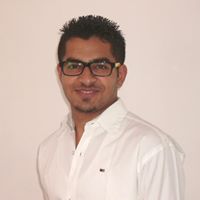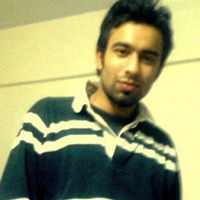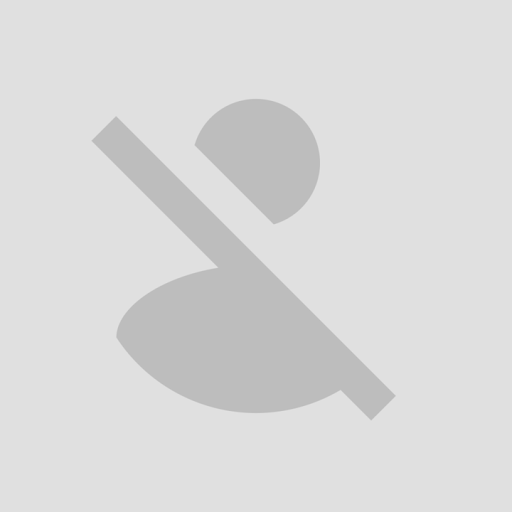Dhruv Sareen
age ~45
from Porter Ranch, CA
- Also known as:
-
- Jaya Sareen
- Sareen Dhruv
- Dareen Dhruv
Dhruv Sareen Phones & Addresses
- Porter Ranch, CA
- Studio City, CA
- Madison, WI
- 19375 Crystal Ridge Ln, Porter Ranch, CA 91326
Resumes

Executive Director, Biomanufacturing Center
view sourceLocation:
11829 Stone Gate Way, Northridge, CA 91326
Industry:
Biotechnology
Work:
Cedars-Sinai Medical Center
Executive Director, Biomanufacturing Center
Ucla
Adjunct Assistant Professor, Step 3
Ucla Jul 2014 - Jun 2016
Adjunct Assistant Professor, Step 2
Cedars-Sinai Medical Center Mar 2012 - Mar 2014
Research Scientist I-Faculty
Cedars-Sinai Medical Center Mar 2012 - Mar 2014
Assistant Professor
Executive Director, Biomanufacturing Center
Ucla
Adjunct Assistant Professor, Step 3
Ucla Jul 2014 - Jun 2016
Adjunct Assistant Professor, Step 2
Cedars-Sinai Medical Center Mar 2012 - Mar 2014
Research Scientist I-Faculty
Cedars-Sinai Medical Center Mar 2012 - Mar 2014
Assistant Professor
Education:
University of Wisconsin - Madison 2007 - 2010
University of Wisconsin - Madison 2002 - 2007
Doctorates, Doctor of Philosophy, Chemistry University of Wisconsin School of Medicine and Public Health 2002 - 2007
Doctorates, Doctor of Philosophy, Chemistry University of Mumbai 1998 - 2002
Bachelors, Bachelor of Technology Greenlawns High School 1992 - 1996
Delhi Public School Mathura Road 1983 - 1991
University of Wisconsin - Madison 2002 - 2007
Doctorates, Doctor of Philosophy, Chemistry University of Wisconsin School of Medicine and Public Health 2002 - 2007
Doctorates, Doctor of Philosophy, Chemistry University of Mumbai 1998 - 2002
Bachelors, Bachelor of Technology Greenlawns High School 1992 - 1996
Delhi Public School Mathura Road 1983 - 1991
Skills:
Biochemistry
Stem Cells
Cell
In Vitro
Cell Culture
Biotechnology
Molecular Biology
Cell Biology
Confocal Microscopy
Microscopy
Western Blotting
Cancer
Protein Chemistry
Pharmacology
Pcr
Fluorescence
Drug Discovery
Regenerative Medicine
Immunohistochemistry
Fluorescence Microscopy
Cell Based Assays
Tissue Culture
Neuroscience
Immunofluorescence
Protein Expression
Assay Development
Neurodegenerative Diseases
Apoptosis
Imaging
Spinal Muscular Atrophy
Drug Development
Flow Cytometry
Qpcr
Rt Pcr
Neurobiology
Lifesciences
Ips Cells
Neuromuscular Disorders
High Content Screening
Neurodegenerative Disease
High Throughput Screening
Journals
Peer Review
Transfection
Signal Transduction
Hts
Cell Signaling
Immunocytochemistry
Neurodegeneration
Amyotrophic Lateral Sclerosis
Stem Cells
Cell
In Vitro
Cell Culture
Biotechnology
Molecular Biology
Cell Biology
Confocal Microscopy
Microscopy
Western Blotting
Cancer
Protein Chemistry
Pharmacology
Pcr
Fluorescence
Drug Discovery
Regenerative Medicine
Immunohistochemistry
Fluorescence Microscopy
Cell Based Assays
Tissue Culture
Neuroscience
Immunofluorescence
Protein Expression
Assay Development
Neurodegenerative Diseases
Apoptosis
Imaging
Spinal Muscular Atrophy
Drug Development
Flow Cytometry
Qpcr
Rt Pcr
Neurobiology
Lifesciences
Ips Cells
Neuromuscular Disorders
High Content Screening
Neurodegenerative Disease
High Throughput Screening
Journals
Peer Review
Transfection
Signal Transduction
Hts
Cell Signaling
Immunocytochemistry
Neurodegeneration
Amyotrophic Lateral Sclerosis
Languages:
English
Hindi
Punjabi
Hindi
Punjabi

Dhruv Sareen
view sourceUs Patents
-
Compact Mechanical Syringe Extruder For 3D Bioprinting Of Cell Laden Gels
view source -
US Patent:20210269776, Sep 2, 2021
-
Filed:Jun 26, 2019
-
Appl. No.:17/254783
-
Inventors:- Los Angeles CA, US
Dhruv Sareen - Porter Ranch CA, US -
Assignee:CEDARS-SINAI MEDICAL CENTER - Los Angeles CA
-
International Classification:C12N 5/071
C12N 5/074
B33Y 30/00
B33Y 70/00 -
Abstract:Bioprinting is the layer-by-layer construction of synthetic tissues or scaffolds. Described herein is a motorized extruder which can precisely extrude and retract extrudate such as bioinks in a compact and rapidly-loadable form-factor. This includes a compact bioprinter using a stepper motor coupled with a threaded shaft to directly move the plunger of an extruder. This pneumatic-mechanical system obviates the needs for pneumatic tubing, rods, or other complex elements of existing designs. The direct drive design further allows for a lighter, smaller gantry that is capable of more precise fabrication of bioprinted constructions. This includes delicate vasculature systems that are beyond limits of existing bioprinting technologies.
-
Methods Of Use Of Islet Cells
view source -
US Patent:20210000880, Jan 7, 2021
-
Filed:Mar 22, 2019
-
Appl. No.:16/982691
-
Inventors:- Los Angeles CA, US
Dhruv Sareen - Porter Ranch CA, US -
Assignee:CEDARS-SINAI MEDICAL CENTER - Los Angeles CA
-
International Classification:A61K 35/39
C12N 5/071 -
Abstract:Type 2 diabetes (T2D) is a clinical syndrome caused by insufficient insulin secretion for insulin requirements. described herein are compositions and methods for microphysiological MPS models of disease (MODs) for diabetes. These platforms allow one to compare the effect of chronic β-cell stimulation in the presence and absence of patient specific immune cells in IPSC-derived islets from each group. Additionally, one can reproduce the T2D β-cell phenotype, using islets-on-chips will also be exposed to gluco-lipotoxicity. Likewise, skeletal muscle-on-chips are exposed to patient specific activated immune cells, variable motor neuron innervation and lipids characteristic of T2D.
-
Generation Of Induced Pluripotent Stem Cells From Normal Human Mammary Epithelial Cells
view source -
US Patent:20200332316, Oct 22, 2020
-
Filed:Jun 30, 2020
-
Appl. No.:16/917008
-
Inventors:- Los Angeles CA, US
Dhruv Sareen - Porter Ranch CA, US
Loren A. Ornelas - Los Angeles CA, US -
Assignee:CEDARS-SINAI MEDICAL CENTER - Los Angeles CA
-
International Classification:C12N 15/85
C12N 5/074 -
Abstract:Described herein are reprogramming techniques allowing for production of mammary-derived iPSCs (“m-iPSCs”). The m-iPSCs described herein exhibit all the hallmarks of stem cell identity including round cluster, bright colony morphology, clonal expansion, and pluripotent marker expression (alkaline phosphatase expression, Oct-4, nanog, etc.) Further refined techniques allow for generation of m-iPSCs under essentially defined conditions.
-
Unified Cell Differentiation Protocol
view source -
US Patent:20200224159, Jul 16, 2020
-
Filed:Oct 5, 2018
-
Appl. No.:16/340185
-
Inventors:- Ahmenabad, Gujarat, IN
Rajani BATTU - Anandnagar, Bangalore, IN
Reena RATHOD - Nagar, Bangalore, IN
Harshini SURENDRAN - Tamil Nadu, IN
Kapil BHARTI - Potomac MD, US
Deepak LAMBA - San Anselmo CA, US
Dhruv SAREEN - Northridge CA, US
Mahendra RAO - Timonium MD, US
Sushma NANJUNDA SWAMY - Bangalore-Karnataka, IN
Vijay Bhaskar KONALA REDDY - Vishakapatnam-Andhra Pradesh, IN
Mohanapriya RAJAMOORTHY - Dharmapuri - Tamil Nadu, IN -
International Classification:C12N 5/079
A61K 35/30
A61K 35/545 -
Abstract:A unified cell differentiation protocol for obtaining photoreceptor cells, retinal pigment epithelium, and 3D retinal organoid from pluripotent stem cells is described. Also described are photoreceptor cells, retinal pigmented epithelium, and 3D retinal organoid obtained from pluripotent stem cells. Also described are a pharmaceutical composition and a medicament containing the photoreceptor cells, retinal pigment epithelium, and 3D retinal organoid as described.
-
Systems And Methods For Growth Of Intestinal Cells
view source -
US Patent:20200157508, May 21, 2020
-
Filed:May 18, 2018
-
Appl. No.:16/614924
-
Inventors:- Los Angeles CA, US
Clive Svendsen - Pacific Palisades CA, US
Stephan R. Targan - Santa Monica CA, US
Michael Workman - Santa Monica CA, US
Dhruv Sareen - Porter Ranch CA, US -
Assignee:Cedares-Sinai Medical Center - Los Angeles CA
-
International Classification:C12N 5/071
A01N 1/02 -
Abstract:Induced pluripotent stem cell (iPSC)-based organoid technology has tremendous potential to elucidate the intestinal and colonic epithelium's role in health and disease. Described herein are methods and compositions for generation of intestinal and colonic cells from iPSCs. Derivation of iPSCs from subjected afflicted with early onset and very early onset Inflammatory Bowel Disease (IBD), serves as an excellent model for understanding disease pathogenesis.
-
In Vitro Induction Of Mammary-Like Differentiation From Human Pluripotent Stem Cells
view source -
US Patent:20200002671, Jan 2, 2020
-
Filed:Jan 25, 2018
-
Appl. No.:16/480778
-
Inventors:- Los Angeles CA, US
Xiaojiang CUI - Arcadia CA, US
Dhruv SAREEN - Porter Ranch CA, US
Armando E. GIULIANO - Los Angeles CA, US -
Assignee:Cedars-Sinai Medical Center - Los Angeles CA
-
International Classification:C12N 5/071
A61K 35/55
C12N 5/074 -
Abstract:Human induced pluripotent stem cells (iPSCs) can give rise to multiple cell types and hold great promise in regenerative medicine and disease modeling applications. The Inventors herein developed a reliable two-step protocol to generate human mammary-like organoids from iPSCs. Non-neural ectoderm cell-containing spheres, referred to as mEBs, were first differentiated and enriched from iPSCs using MammoCult medium. Gene expression profile analysis suggested that mammary gland function-associated signaling pathways were hallmarks of 10-d differentiated mEBs. The Inventors generated mammary-like organoids from 10-d mEBs using 3D floating mixed gel culture and a three-stage differentiation procedure. These organoids expressed common breast tissue, luminal, and basal markers, including estrogen receptor, and could be induced to produce milk protein. These results demonstrate that human iPSCs can be directed in vitro toward mammary lineage differentiation.
-
Development Of Spinal Cord On A Microfluidic Chip
view source -
US Patent:20190359924, Nov 28, 2019
-
Filed:Feb 26, 2019
-
Appl. No.:16/286185
-
Inventors:- Boston MA, US
- Los Angeles CA, US
Carolina Lucchesi - Westwood MA, US
Christopher David Hinojosa - Malden MA, US
Jacob Fraser - Somerville MA, US
Geraldine Hamilton - Boston MA, US
Gad Vatine - Los Angeles CA, US
Samuel Sances - Santa Monica CA, US
Clive Svendsen - Pacific Palisades CA, US
Daniel Levner - Brookline MA, US
Dhruv Sareen - Porter Ranch CA, US -
International Classification:C12M 3/06
C12N 5/0793
C12N 5/071
C12N 5/079
B01L 3/00
C12M 1/12
C12N 5/00 -
Abstract:The invention relates to culturing brain endothelial cells, and optionally astrocytes and neurons in a fluidic device under conditions whereby the cells mimic the structure and function of the blood brain barrier. Culture of such cells in a microfluidic device, whether alone or in combination with other cells, drives maturation and/or differentiation further than existing systems.
-
Methods And Compositions For Spinal Cord Cells
view source -
US Patent:20190194606, Jun 27, 2019
-
Filed:Aug 29, 2017
-
Appl. No.:16/329659
-
Inventors:- Los Angeles CA, US
Sam SANCES - Santa Monica CA, US
Clive SVENDSEN - Pacific Palisades CA, US
Dhruv SAREEN - Porter Ranch CA, US
Alexis J. KERL - Los Angeles CA, US -
Assignee:CEDARS-SINAI MEDICAL CENTER - Los Angeles CA
-
International Classification:C12N 5/00
C12N 5/0797
C12M 3/06
B01L 3/00
C12M 1/12
C12N 5/071 -
Abstract:Described here are systems and methods for deriving both spinal motor neurons and brain microvascular endothelial cells from induced pluripotent stem cells using distinct methods and combining them in a chip format. Neurons cultured alone in chip microvolume displayed increased calcium transient function and chip-specific gene expression. When seeded with endothelial cells, interaction further enhanced neural function, elicited vascular-neural interaction, niche gene expression with enhanced in vivo-like signatures arising from the chip co-cultures. Development of novel media formulations further allow for improved readout of differentiation process, by eliminating additives that otherwise confound differentiation processes and resulting phenotypes.

Dhruv Cool Sareen
view source
Dhruv Sareen
view source
Dhruv Sareen
view source
Dhruv Sareen
view source
Dhruv Sareen
view sourceMylife

Dhruv Sareen Studio City...
view sourceLocate Dhruv Sareen of Studio City, CA online. See what your old friends, neighbors, and colleagues have been up to at MyLife.
Googleplus

Dhruv Sareen

Dhruv Sareen

Dhruv Sareen
Youtube
Get Report for Dhruv Sareen from Porter Ranch, CA, age ~45
